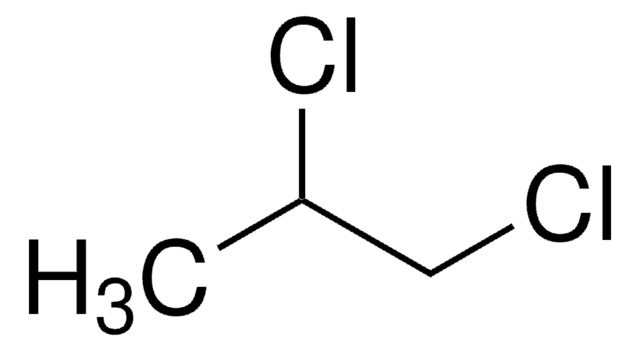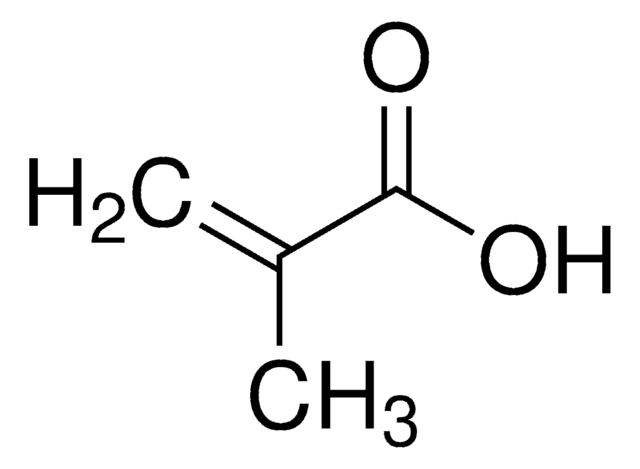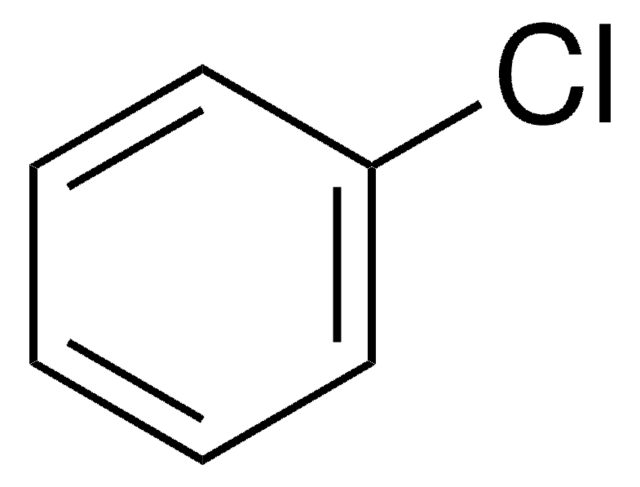82270
1,2-Dichloropropane
99%
Synonyme(s) :
Propylene dichloride
About This Item
Produits recommandés
Densité de vapeur
3.89 (vs air)
Pression de vapeur
40 mmHg ( 19.4 °C)
Essai
99%
Forme
liquid
Température d'inflammation spontanée
1035 °F
Limite d'explosivité
14.5 %
Indice de réfraction
n20/D 1.439 (lit.)
n20/D 1.439
pb
95-96 °C (lit.)
Pf
−100 °C (lit.)
Densité
1.156 g/mL at 25 °C (lit.)
Groupe fonctionnel
chloro
Chaîne SMILES
CC(Cl)CCl
InChI
1S/C3H6Cl2/c1-3(5)2-4/h3H,2H2,1H3
Clé InChI
KNKRKFALVUDBJE-UHFFFAOYSA-N
Vous recherchez des produits similaires ? Visite Guide de comparaison des produits
Catégories apparentées
Description générale
Application
- 2-Ylidene-1,3-dithiolane derivatives via one-pot reaction with carbon disulfide and active methylene compounds in the presence of sodium ethylate.
- β-Chloropropylsulfurs by controllable dechloro-coupling reaction with thiols.
- Thiazolidine and 1,3-thiazinane derivatives via [3+2] and [3+3] annulation reaction with β-ketothioamides in the presence of phosphonium ylide as a catalyst.
Mention d'avertissement
Danger
Mentions de danger
Conseils de prudence
Classification des risques
Acute Tox. 3 Inhalation - Acute Tox. 4 Oral - Carc. 1B - Flam. Liq. 2
Code de la classe de stockage
3 - Flammable liquids
Classe de danger pour l'eau (WGK)
WGK 3
Point d'éclair (°F)
59.0 °F - closed cup
Point d'éclair (°C)
15.0 °C - closed cup
Équipement de protection individuelle
Eyeshields, Faceshields, Gloves, type ABEK (EN14387) respirator filter
Faites votre choix parmi les versions les plus récentes :
Déjà en possession de ce produit ?
Retrouvez la documentation relative aux produits que vous avez récemment achetés dans la Bibliothèque de documents.
Les clients ont également consulté
Protocoles
US EPA Method TO-17: GC Analysis of Volatiles on VOCOL® after Collection/Desorption using Air Toxics Tube
Notre équipe de scientifiques dispose d'une expérience dans tous les secteurs de la recherche, notamment en sciences de la vie, science des matériaux, synthèse chimique, chromatographie, analyse et dans de nombreux autres domaines..
Contacter notre Service technique














